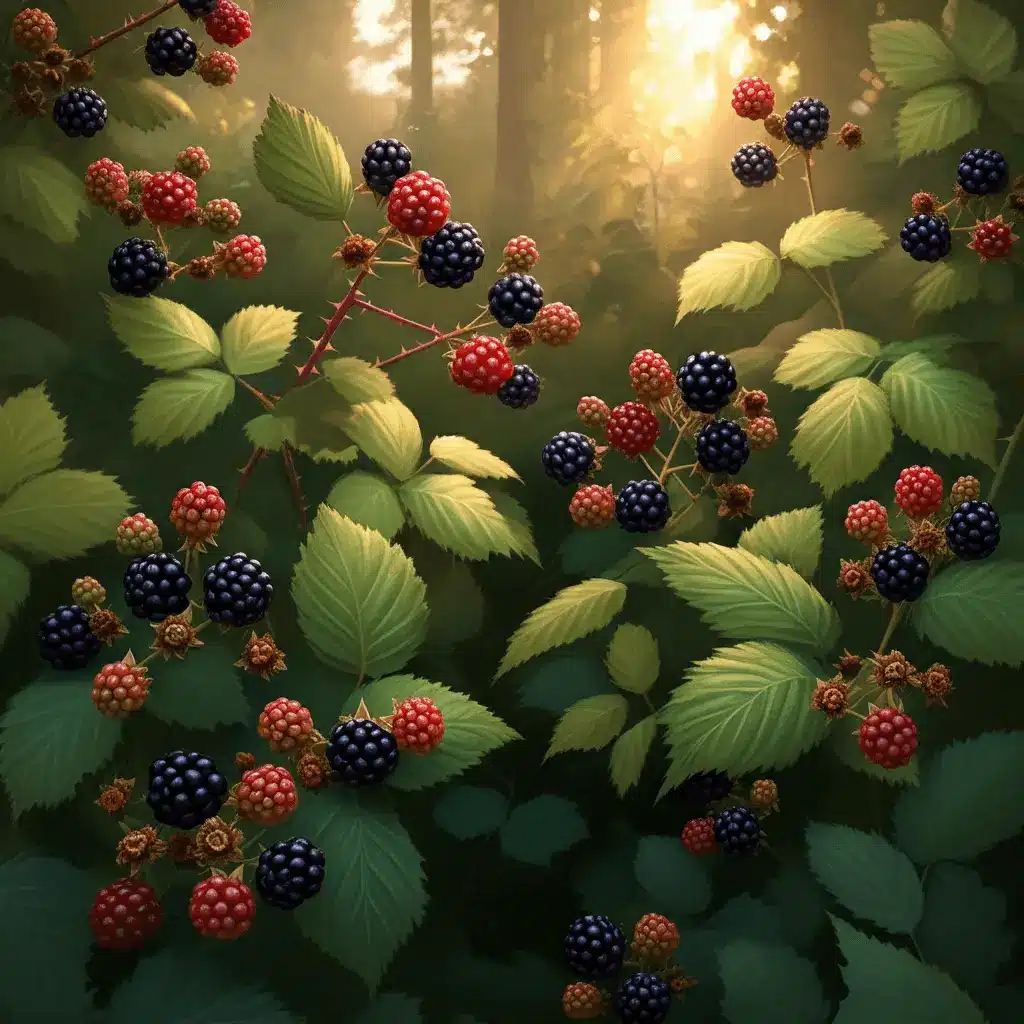Foraging is an art that connects us to the land, offering the satisfaction of harvesting nature’s bounty while fostering sustainable living. Among the treasures of the wild, brambleberry plants, known for their juicy blackberries and versatile leaves, offer a wealth of uses for homesteaders. Today, we’ll explore how to identify these plants, harvest their fruit and leaves, and turn them into delicious and practical products for your home.
Whether you’re a seasoned forager or just discovering the joys of living off the land, this guide will give you practical insights and inspiration to make the most of these wild gifts.
How to Identify Brambleberry Plants
The first step in foraging brambleberries is knowing how to recognize the plants in their natural habitat. Brambleberries, including blackberries, are hardy shrubs commonly found in woodlands, hedgerows, and along sunny trails.
Key Characteristics:
- Leaves
Brambleberry plants have compound leaves, typically consisting of three to five leaflets with serrated edges. The leaves are a vibrant green and have a slightly rough texture.
- Thorny Stems
The stems, or canes, are usually covered in small, sharp thorns. While they can be a challenge to work around, these thorns serve as a natural deterrent to protect the plant.
- Berries
The fruit changes color as it ripens, shifting from green to red and finally to a deep, glossy black when fully mature. The berries grow in small clusters and are packed with sweet juiciness when ripe.
Once you’ve identified these characteristics, you’ll know you’re dealing with a brambleberry plant—and you’re ready to enjoy the rewards it offers!
Harvesting Brambleberry Fruit
Brambleberry fruit is not only delicious but also incredibly easy to pick with the right techniques. Timing and care are key to ensuring the best flavor and quality.
When to Pick Brambleberries
The best time to harvest blackberries is during the peak of summer, typically from mid-July to early September, depending on your region. Look for berries that are fully black, plump, and detach easily from the stem when tugged gently.
Tips for Selecting the Sweetest Berries
- Pick brambleberries early in the morning when they’re cool and firm.
- Avoid berries that are mushy or show signs of mold.
- Taste-test as you pick (yes, it’s encouraged!) to find the sweetest bushes.
By following these simple tips, you can fill your basket with ripe brambleberries perfect for eating fresh or preserving for later.
Harvesting Blackberry Leaves for Culinary and Medicinal Use
While the fruit often steals the spotlight, blackberry leaves are a hidden gem for homesteaders. Collected young and fresh, these leaves offer surprising versatility in your kitchen and medicine cabinet.
How to Harvest Blackberry Leaves
Spring is the optimal time to gather blackberry leaves, as this is when the plant produces the youngest, most tender growth. Use sharp scissors or pruning shears to snip the leaves cleanly, leaving some on the branch to ensure the plant continues to thrive.
Culinary Uses
- Sautéed Greens
Treat blackberry leaves like spinach; sauté them with a touch of olive oil, garlic, and salt for a nutrient-packed side dish.
- Blackberry Leaf Tea
- Fresh Tea: Steep freshly picked leaves in hot water for 5–10 minutes for a mild, earthy brew.
- Dried Tea Preparation: Dry the leaves in a well-ventilated space, then use them as a rich, herbal tea with subtle sweet notes.
Medicinal Benefits
Blackberry leaves have long been used in traditional remedies. One of their most notable uses is treating diarrhea, thanks to their natural astringent properties. Simply steep the leaves into a strong tea to access their calming benefits.
By exploring both culinary and wellness applications, you’ll appreciate how blackberry leaves can become an essential part of your homesteading toolkit.
Culinary Applications of Brambleberries
If you’ve taken the time to harvest brambleberries, don’t wait too long to enjoy them—once picked, they spoil quickly. Fortunately, there are plenty of ways to preserve and use them in your daily life.
Preservation Tips
- Freezing
Spread the fresh berries out on a baking sheet and freeze them individually before transferring them to a freezer-safe bag. This prevents clumping and ensures you can grab just the amount you need.
- Canning
Turn brambleberries into jams, jellies, or preserves. Their natural pectin content makes them perfect for spreading on toast or baking into desserts.
Easy Recipe Ideas
- Brambleberry Soda
Make a refreshing summer beverage by blending brambleberries with sparkling water, a squeeze of lemon, and a hint of honey.
- Brambleberry Wine
Ferment these berries into a homemade wine with a deep, rich aroma that’s perfect for entertaining or gifting.
- Summer Tart
Create a simple tart by layering a flaky crust with fresh berries, a sprinkle of sugar, and a touch of flour to bind the filling. Bake until golden and enjoy a slice of summer.
The culinary opportunities for brambleberries are endless, so don’t hesitate to experiment and make custom creations for your family and friends.
Foraging and Enjoying the Harvest
For homesteaders, brambleberries and blackberry leaves represent not just a seasonal treat but a celebration of nature’s abundance. By learning to forage, harvest, and utilize these versatile plants, you’ll deepen your connection to the land and enrich your family’s table with nourishing, flavorful options.
Whether you’re sipping blackberry leaf tea on a cool afternoon or enjoying a brambleberry tart at a summer gathering, the rewards of foraging are immeasurable. Get out there, explore your surroundings, and harvest the potential just waiting in the bushes.
Feel inspired? Grab your basket, head to the nearest brambleberry patch, and start creating your own stories of wild-crafted delights. Happy foraging!
